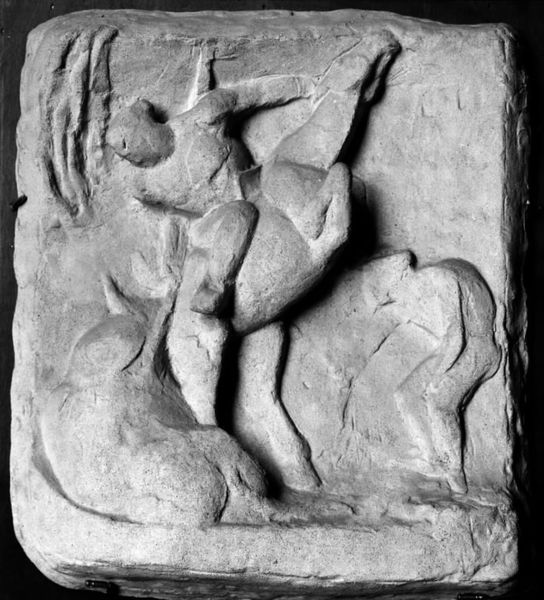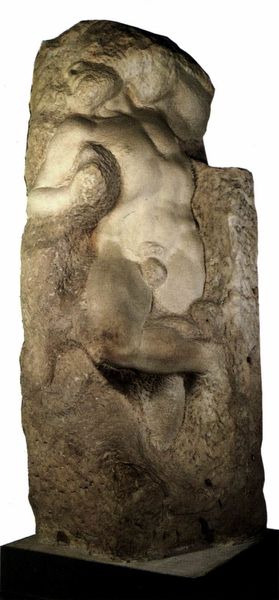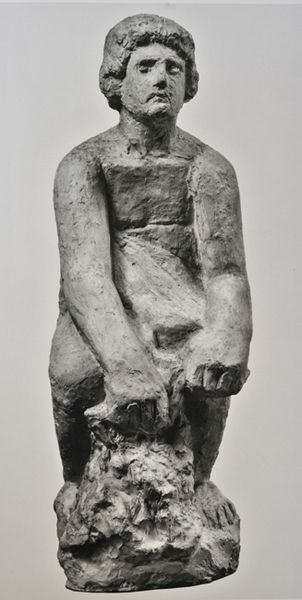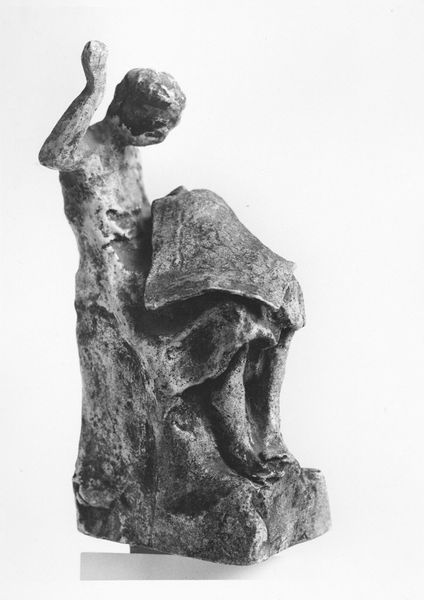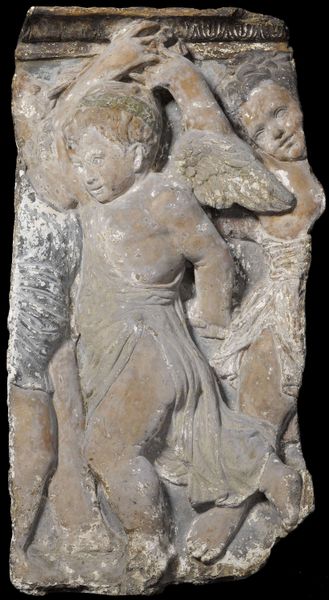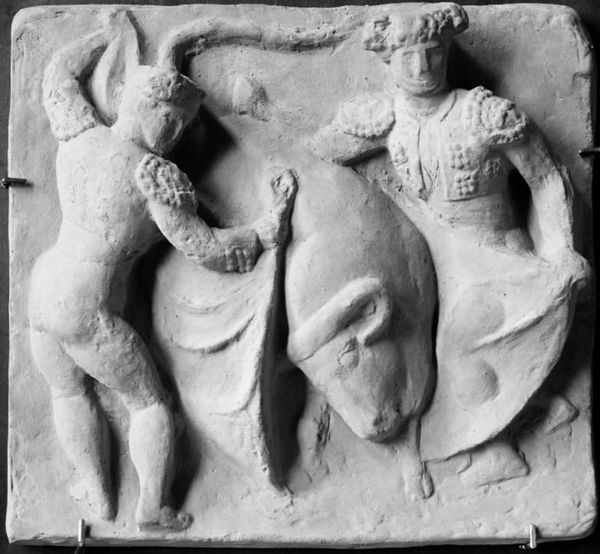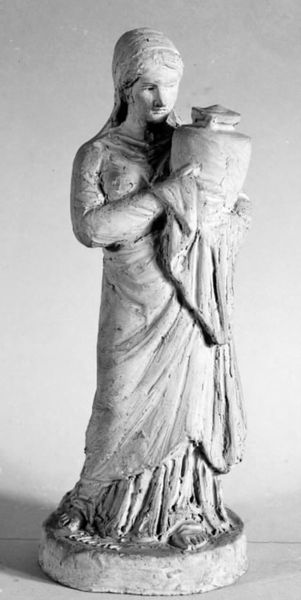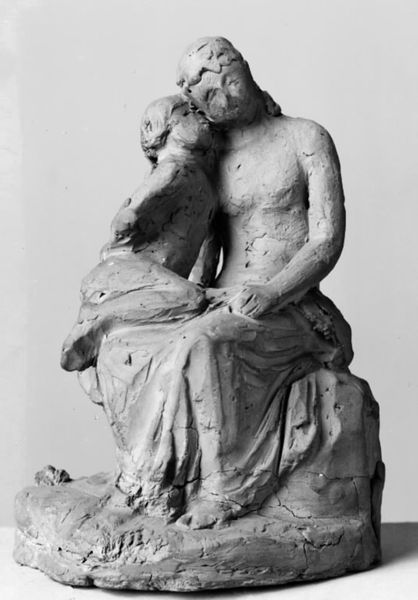
carving, sculpture, marble
#
portrait
#
statue
#
carving
#
head
#
structure
#
stone
#
sculpture
#
textured
#
detailed texture
#
greek-and-roman-art
#
sculptural image
#
figuration
#
rock
#
unrealistic statue
#
sculpting
#
sculpture
#
texture
#
marble
#
realism
#
statue
Copyright: Public domain
Curator: Good morning. We are looking at "St. Haralambos and Mercury" by Yannoulis Chalepas, created in 1925 using marble. Editor: Immediately, I’m struck by the rawness of it. The textures are incredibly pronounced; you can practically feel the artist's hand in every chisel mark. It feels unfinished, which lends it a strange vulnerability. Curator: Yes, the raw texture definitely departs from the idealized forms usually seen in depictions of saints and mythological figures. Considering St. Haralambos as a protector against plagues, and Mercury as a messenger – does this juxtaposition speak to a sense of seeking solace or answers during tumultuous times? Editor: Definitely a conversation seems to be happening, if you will, across belief systems... like an old prayer, re-imagined as an abstract poem or a half-remembered dream. I wonder if that rawness contributes to this – those rough edges, the almost brutal carving... it’s as if the artist is grappling with something unresolved. Curator: Perhaps Chalepas was deliberately echoing Archaic Greek sculpture where simplicity and symbolic representation were prioritized over naturalistic depiction. The head has the form of a portrait yet blends historical eras and philosophical ideals. Editor: That’s intriguing – a portrait across time. The scale is significant, right? Almost confrontational? The piece demands attention but also evokes a feeling of almost melancholic introspection. There’s a certain weightiness about it, both physical and emotional. Curator: Chalepas faced significant mental health challenges throughout his life; his psychological struggles are often interwoven with readings of his work. Could this raw handling of the medium also be an expression of internal turmoil finding its way into form? Editor: Ah, a tangible externalizing of what’s inside. Definitely something to chew on… you can see it in the determined, forward set of their jaw – a strength emerging from something chaotic. Curator: Ultimately, I find it compelling to consider that the enduring power of religious and mythological figures can be revitalized when the familiar symbols are questioned by and integrated with innovative, more modern forms of expression. Editor: It certainly shakes things up, doesn't it? Leaving us with a rather poetic fragment, urging you to conjure your interpretation for it, its figures, the maker, its world, and ultimately... of yourself.
Comments
No comments
Be the first to comment and join the conversation on the ultimate creative platform.
